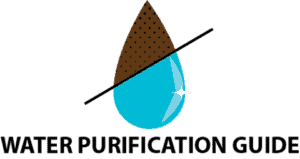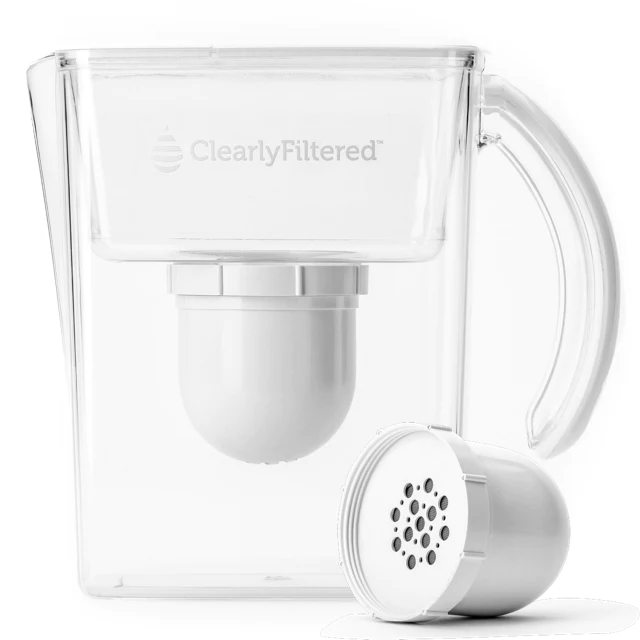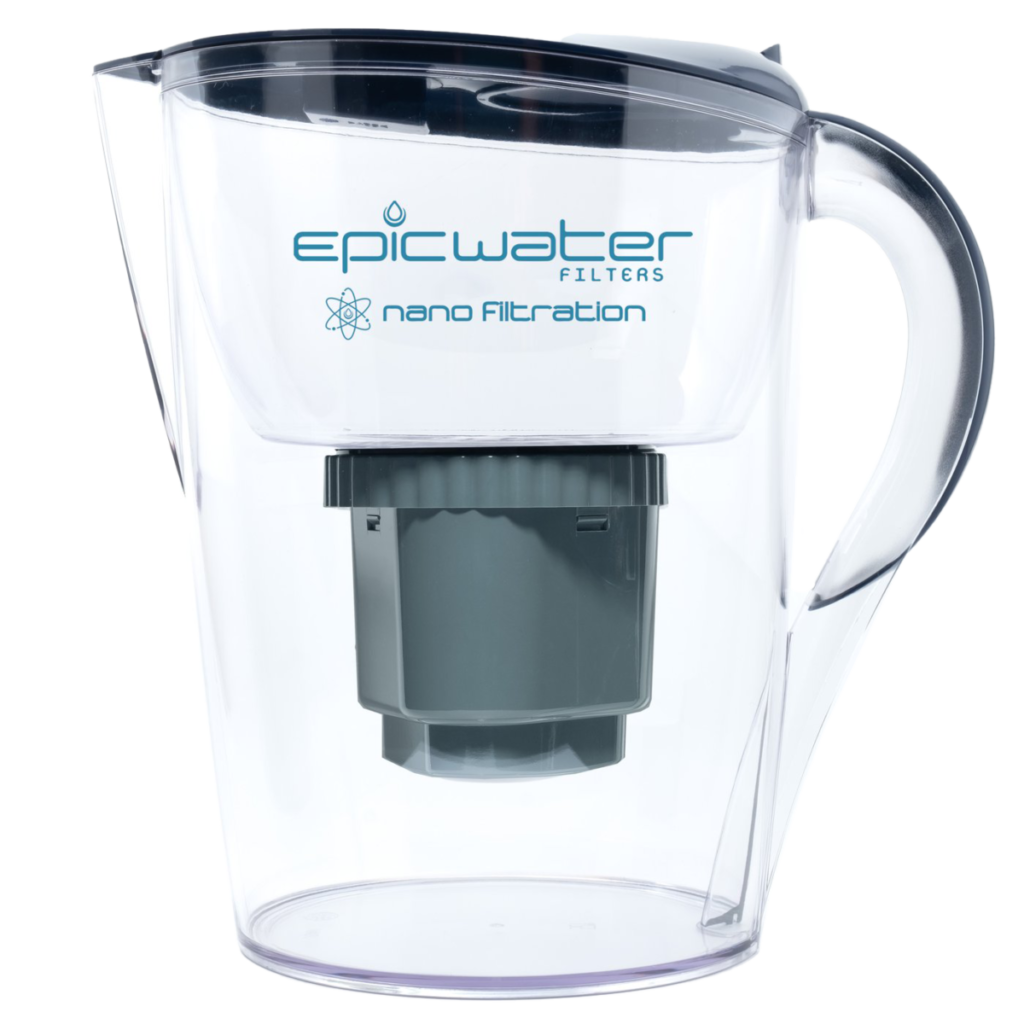Water filter pitchers are an affordable and easy way to remove many different contaminants from water. Removing bacteria (and viruses) can be a little more difficult but there are some brads of filter pitchers that can.
Water filter pitchers certified to NSF standards 244 or P231 can remove bacteria from water. Water filter pitchers with absolute pore sizes of less than or equal to 0.3 microns will offer moderate effectiveness against bacteria. Filter pitchers with UV purification or filters that contain silver can, respectively, help disinfect water or reduce biofilm buildup.
In this post, we’ll explain everything about waterborne bacteria including which water filter pitchers can actually remove them from drinking water. We will detail the negative effects of bacteria, how certain water filter pitchers can remove bacteria, and how bacteria get into our water supply.
4 water filter pitchers that remove bacteria
Not all water filter pitchers can remove bacteria from your drinking water hence why this list is short.
1. Clearly Filtered water filter pitcher
The Clearly Filtered Water Pitcher is NSF-244 certified to remove 99.99% of bacteria, including:
- E. Coli
- Klebslella spp.
Clearly Filtered pitchers are also capable of removing 99.99% of harmful microbiological contaminants in water including Giardia, Cryptosporidium, Algae, Amoeba, Cysts and 99.9999% of viruses (including MS2 Phage and Rotavirus).
This company has thought of everything. The pitcher even has a “water dam” that is built inside the top reservoir that stops any unfiltered water (including microbiological contaminants) from spilling over into the filtered water. This extra layer of protection is certainly something we have not seen from other brands.
2. Epic Nano water filter pitcher
The USA-made Epic Nano water filter Pitcher carries the NSF-P231 certification and can eliminate up to 99.9999% of bacteria, including:
- Pseudomonas aeruginosa
- E. Coli
- Klebslella pneumoniae
It can also remove 99.999% of harmful germs such as Giardia (protazoan flagellates), Cryptosporidium (parasites), and 99.95% of MS2 Phage (virus).
To eliminate microorganisms from drinking water, the Epic nano water filter pitcher uses a sub-micron (<1 micron) nanofiber technology in their filter. The filter mechanically removes bacteria, allowing only clean water to pass through.
3. Lifestraw Home water filter pitcher
The LifeStraw Home Water Filter Pitcher is certified to NSF standards P231 for the removal of 99.999999% bacteria such as E. coli, and 99.999% parasites such as Giardia and Cryptosporidium.
4. Clear2O Advanced Gravity water filter pitcher
Clear2O advanced gravity water filter pitcher can filter contaminants to sub-micron level (less than 1 micron) and is likely capable of reducing some microbiological contaminants.
The company claims to reduce Cryptosporidium cysts, which are approximately 4.2 – 5.4 microns in diameter, and Giardia cysts (~8 – 19 microns in size). While these are not bacteria, the sub-micron filter should be more than capable of achieving this.
What are Bacteria?
Bacteria are single-celled microscopic organisms that can freely exist practically anywhere around the world. There are many different types of bacteria and can be found in the soil, water, on the rocks, or even in the human body.
Most bacteria are harmless to humans. However, some bacteria are pathogenic, which means that they can cause diseases.
Waterborne bacteria are quite common, and some can cause various health conditions if ingested through drinking water or breathed into the lungs.
Different types of waterborne bacteria
Some of the waterborne bacteria with potential harm to human health, include:
- Pseudomonas: Pseudomonas aeruginosa are bacterium that can cause various infections like otitis, conjunctivitis, and folliculitis.
- Mycobacteria: Nontuberculous mycobacteria are environmental organisms found in municipal and natural water sources. They can cause respiratory infections, especially in people with underlying lung disease or depressed immune systems.
- Klebslella: Bacteria of the Klebslella genus can cause various diseases in humans and are commonly found in surface water, drinking water, soil, and sewage. The waterborne Klebslella pneumoniae species is often associated with various health conditions including pneumonia, meningitis. urinary tract infections, and soft tissue infections.
- Salmonella: Salmonellae are gram-negative, rod-shaped bacteria. These pathogens, which can survive for several weeks in water and soil in favorable environments, are primarily introduced into natural waters by municipal sewage, agricultural waste, and stormwater runoff. It causes typhoid when ingested.
- Shigella: Shigella is the infectious substance of shigellosis bacteria, also known as bacillary dysentery, which is contagious by direct contact with an infected person, contaminated food, or drinking water.
- Escherichia: When ingested in water, the gram-negative bacteria Escherichia can cause gastroenteritis in children, diarrhea, and hemorrhagic colitis. E-coli is one of the most well-known species of Escherichia.
- Francisella: Francisella tularensis, the type species of the genus, has four subspecies and is a highly contagious bacteria that causes sickness such as tularemia in humans when consumed in water.
- Legionella spp.: It is a genus of Gram-negative bacteria and the sole member of the Legionellaceae family. Legionnaires’ disease, a severe form of pneumonia that affects people worldwide, is caused by Legionella pneumophila. They are found naturally in freshwater environments but can grow and spread in home faucets and showerheads.
- Burkholderia cepacia: A class of bacteria known as Burkholderia cepacia can be found in soil and water and is frequently resistant to standard medications.
Negative health effects of bacteria
Although some bacteria can be beneficial to the human gut, many bacteria can be detrimental to human health.
According to the Centers for Diseases Control and Prevention (CDC), most healthy people exposed to bacteria-contaminated water may not get sick.
However, the following groups of people are at increased risk:
- The elderly.
- Contact lens users (mainly due increased physical contact with the lens/eye from touching)
- People whose immune systems have been compromised such as from cancer, organ transplantation, or HIV
- Those who suffer from underlying conditions like diabetes, renal failure, or liver failure
- Children younger than six months.
- Smokers, and ex-smokers.
- Those suffering from a long-term lung condition such as chronic obstructive pulmonary disease (COPD).
The following are some of the effects of drinking water that has bacteria.
According to the CDC, drinking bacteria-contaminated water may lead to;
- Stomach illnesses, i.e., vomiting and diarrhea.
- Death in extreme cases
- Fever
- Nausea
- Headaches
- Fatigue
- Cramps
- Ingesting harmful bacteria can lead to dangerous infections such as cholera (caused by vibrio cholerae) and typhoid (caused by Salmonella typhi).
- According to research, it can also cause respiratory, eye, skin, or ear issues.
How water filter pitchers remove bacteria
Many water filter pitchers can reduce a suite of contaminants from water, but not every water filter pitcher can get rid of bacteria.
Here’s what to look out for:
Pore size
Filters with an absolute pore size of less than or equal to 0.3 microns offer moderate effectiveness at removing harmful bacteria and cysts from water.
The smaller the pore size in the filter, the more effective they will be at mechanically stopping harmful microorganisms such as bacteria or cysts from getting into your drinking water.
Testing – Certifications
Filter pitchers that are certified to National Sanitation Foundation (NSF) / American National Standards Institute (ANSI) standards 244 or P231 mean they have been independently tested to remove microorganisms such as bacteria, cysts, and viruses.
While it is not compulsory for a water filter to be certified to NSF standards, they certainly make it easier to determine if the product does what the company claims it can.
There are important differences between these NSF certifications.
NSF-244
The NSF-244 standard is designed to test filters for the supplemental microbial control of specific organisms that…
“May occasionally be present in drinking water”
but
“Should not be used with water that is microbiologically unsafe or of unknown quality”
NSF-P231
In comparison, the NSF-P231 standard is for filters that could be used for…
“Waters of unknown microbiological quality, but are presumed to be potable”
Basically, a water filter pitcher carrying either these NSF certifications (NSF 244 or P231) will be effective at removing bacteria when used to filter tap water that has been treated to public water system standards.
However, a pitcher with the NSF-244 certification may not necessarily remove the same level of microbial contaminants when the microbiological water quality is unknown, such as during a boil water advisory or from a private (domestic) well.
Note: Some water filter pitcher brands will state they are NSF certified, but this does not necessarily mean they are tested to remove microbiological contaminants.
For example, it is quite common for filter pitcher brands to carry NSF certifications 42 and/or 53, which relate to the removal of aesthetic impurities and contaminants that can have negative health effects, respectively.
So, it’s important to know your NSF numbers when you’re looking for a filter pitcher to remove bacteria and other microbes.
Silver
Silver technology is sometimes used in water filter pitchers to inhibit bacterial growth within the filter media itself.
When silver comes in contact with moisture, silver ions and/or silver nanoparticles are released that prevent bacterial DNA replication, which will eventually kill them. This not only helps control the growth of biofilms (large bacterial populations) in the pitcher or dispenser, but it can also make the filter last longer.
Water Purification Guide has more information on how silver can be used to disinfect your water available here.
Ultraviolet light
Ultraviolet light is a powerful way to kill bacteria from water. It’s important that they are combined with a pre-sediment filter of some sort, which allows the UV light to penetrate the water completely. Otherwise, a lot of the UV light gets dispersed, and the UV germicidal irradiation is incomplete.
There are 3 types of UltraViolet (UV) light:
- UVA
- UVB
- UVC
UVC-light is the most harmful to bacteria and viruses in water. It will even kill viruses at the DNA level.
Although voluntary, reputable companies are typically certified to NSF/ANSI 55 standards (UltraViolet Microbial Water Treatment Systems) to prove they actually kill bacteria and viruses.
Ultraviolet Light systems should be labeled Class A or Class B systems.
- Class A systems can inactivate pathogenic organisms using a UV dose at the energy wavelength of 254 nm (40 mJ/cm²).
- Class B systems can inactivate non-pathogenic organisms using a lower UV dose at 16 mJ/cm².
How do bacteria get into our water supply?
There are many different ways in which bacteria can enter our water supply, such as;
- Bacteria growing in water pipes, faucets, shower heads etc.
- Soil particles harboring bacteria that travel in the water.
- Private (domestic) wells.
- A pipe leak brought on by their aging or bursting.
- Flooding causing treated water contamination.
- Human and animal wastes.
- Defective septic systems.
- Sanitary sewer pipes with leaks.
- Sewage system treatment that was installed incorrectly.
- Untreated surface water contaminating treated municipal water.
What water filters remove bacteria and viruses?
Bacteria
The effectiveness of any water filter at removing or reducing the bacteria in water depends on the filtration technology. The methods that are recommended by the CDC to have a VERY HIGH effectiveness at removing harmful bacteria are:
- Ultrafiltration
- Nanofiltration
- Distillation
- Ultraviolet (UV) systems (that include pre-filtration)
- Reverse osmosis
Filtration technologies that should be avoided include:
- Microfiltration – MODERATE effectiveness at removing bacteria
- Water softeners – NOT effective at removing bacteria
Viruses
Removing viruses can be more difficult and according to the CDC, different filtration technologies have varied effectiveness, including:
- Microfiltration – NOT effective
- Water softeners – NOT effective
- Ultrafiltration – MODERATELY effective
- Nanofiltration – VERY effective
- Reverse osmosis – VERY effective
- Distillation – VERY effective
- Ultraviolet (UV) systems (that includes pre-filtration) – HIGH effectiveness
Do Brita filters remove bacteria?
Brita filters are not designed to purify water and should not be used with water that is microbiologically unsafe or if the water quality is unknown, such as during a boil water advisory or from private wells.
Brita filters are certified to NSF standards 42, 53, and some Brita products are also certified to NSF standard 401. However, these certifications do not cover the removal or reduction of microbiological contaminants including bacteria, viruses, or parasites.





